Page 185 of 271

Driving and the Environment
184
Shifting gears correctlyThe gear you must shift into depends on th e terrain. Choosing the correct gear contrib-
utes to safe driving. In partic ular if you do not have much experience driving off-road,
it is always better, before negotiating a difficult stretch of the road, to pause and reflect
on which gear to engage. Your experience will tell you which gear is the best for certain
sections of the terrain.
Basically:
When the gear or the driving stage has been properly selected, it is unnecessary to
slow down the vehicle on a downhill sectio n using the footbrake as in most cases the
engine braking power is sufficient.
Depress the accelerator only as much as is necessary. A too great acceleration may
lead to the wheels spinning and thus results in the loss over the control of the vehicle.
Manual gearbox
If you are driving thro ugh difficult terrain, on no account use the clutch or change
the gear. When the clutch is depressed, th e vehicle may come to a standstill because
of the increased grip of all the tyres of the vehicle (e.g. in the mud, in deep sand or on
a slope). Once the vehicle has come to a stan dstill, it may be difficult or even impos-
sible to start off under these conditions.
When negotiating a steep downhill section or a steep uphill section, always shift
into the 1st or 2nd gear.
On a soft or slippery ground, you must drive at the appropriate speed and you
must select the highest possible gear for this.
Automatic gearbox
Select the selector lever position for normal flat stretches of terrain
page 121.
While in the Tiptronic mode, select the se lector lever position or if you are
driving through mud, sand, water or hilly sections of terrain page 123.
When negotiating a steep downhill section or a steep uphill section, select the
selector lever position while in the Tiptronic mode.
On a soft or slippery ground, you must drive at the appropriate speed and you
must select the highest possible driving stage.
Driving over rough and smooth– Switch on the Off-road mode page 170.
– Drive at walking speed over rocky passages.
– If it is not possible to drive around a stone, gently drive onto the stone with one of the front wheels and then drive over it slowly.
WARNING
Observe the important guidelines page 179.
Caution
On no account drive over large objects (suc h as pieces of rock or tree stumps),
neither in the middle nor on one side. When driving over objects which are larger than
the ground clearance, the chassis and its components can get damaged. Your vehicle
could break down far away from any assistance.
Even objects that are smaller than the existing ground clearance can come into
contact with the underbody of the vehicle an d can lead to damage or failure of the
vehicle. This applies especially when there is a hollow or soft ground in front or behind
the object or if you drive too fast over the object and thus the vehicle is deflected.For the sake of the environment
Leaking engine oil and brake fluid poll ute the environment and contaminate the
bodies of water. The disposal e.g. of engine oil soaked soil can be costly.
AD
A3
A2
A1
Fig. 157 Observe the ground clearance
s2ug.6.book Page 184 Friday, April 9, 2010 2:24 PM
Page 186 of 271

Driving and the Environment185
Using the system
Safety
Driving Tips
General Maintenance
Breakdown assistance
Technical Data
Crossing bodies of waterParticular attention is required when driving through bodies of water page 179.Driving through snow-covered terrain– Before you drive through snow-covered te rrain, mount snow chains on the front
wheels or on the rear wheels page 220, “Snow chains” in order to achieve the
best possible traction.
–Switch on the Off-road mode page 170.
Even harmless looking sections of terrain can be dangerous. This applies in particular
for sections where no ruts or other tracks are visible.
WARNING
Driving through snow-covered terrain poses special dangers. Never choose
a dangerous route and never take a risk which could jeopardize your safety and
that of your passengers. If you cannot go on or if you doubt the safety of the
route, turn back and choose another way.
Potholes, troughs, trenches, precipices , sheets of ice or other obstructions
are often completely or partially obscured by snow.
The hidden dangers of snow can cause an accident, serious injuries or your
vehicle to break down under extreme weather conditions.
Driving over steep terrainDriving uphill and downhill– Stop the vehicle before driv ing uphill or downhill, exit the vehicle and explore the
situation.
– Walk a stretch and check the firmness of the soil and look for obstructions or other hidden dangers.
– Check how the route continues beyond the slope.
–Switch on the Off-road mode page 170. – Drive slowly and steadily straight uphill or downhill.
– Do not stop the vehicle on a hillside or attempt to turn around.
– You must prevent the engine from cutting out.
Driving uphill– Check before driving over a hilltop, how it
continues on the other side. If you drive
up a steep hill, the vehicle faces the sky and you cannot see what is directly in front
of the vehicle.
– Switch on the Off-road mode page 170.
– Do not shift gears or release the clutch during the climbing phase.
– Depress the accelerator only as much as is necessary in order to handle the slope.If you can go no further on a slope– Never attempt to make a turn with the vehicle on a hillside.
– If the engine cuts out, press the foot brake and restart the engine.
– Engage the reverse gear and carefully drive backwards in your own tracks.
– Press the foot brake in order to maintain a constant speed.Driving downhill– Switch on the Off-road mode page 170.
– Shift into first gear or select the first driving stage, while in the Tiptronic mode, to drive downhill on steep hillsides in order to use the Downhill Drive Support to its
maximum.
– Press the foot brake gently, so you do not lose the control over your vehicle.
– If it is feasible and safe, drive straight down (maximum gradient).
– Do not release the clutch or shift into Neutral.
WARNING
Never attempt to drive uphill or downhill if it is too steep for your vehicle.
The vehicle could slip or roll over - risk of accident!
s2ug.6.book Page 185 Friday, April 9, 2010 2:24 PM
Page 187 of 271

Driving and the Environment
186
Never attempt to make a turn on a hillside. The vehicle could tilt or roll over.
This can result in serious accidents.
If the engine cuts out on a slope or you can no longer go on for whatever
other reason, then stop!
Never let the vehicle roll down the hill side at idling speed. You can lose the
control over your vehicle.
If the engine cuts out, press the foot brake and restart the engine. Engage the
reverse gear and carefully drive backward s in your own tracks. Use the engine
braking power and press the foot brake in order to maintain a slow and
constant speed.
Observe the important guidelines page 179.
Driving at an angle on a hillsideFig. 158 Steer and maintain your trajectory / in direction to exit - facing uphillDriving at an angle on a hillside is one of the most dangerous situations while driving
off-road. It may look harmless, but you must never underestimate the difficulties and
the dangers when driving at an angle on a hillside. Basically you should avoid moving
your vehicle into a sideways position on a hillside. Under certain circumstances, the
vehicle can slide away uncon trollably or roll over.
Check before driving in a tilted position, whether there is a different and safer route. If
you have to drive in a tilted position, then the ground should be as firm and even as
possible. Note that the vehicle may slide sideways or sink in and roll over when driving on slippery or soft ground. Make sure that
the inclination is not too steep when driving
over surface irregularities. Otherwise, the vehicle can roll over and then roll down the
hillside.
If the vehicle is at a very steep angle, the wheels on the low side must not sink deeply
into the ground or into troughs and you mu st not drive over stones, tree stumps or
other obstructions with the alternate raised wheels.
If there is a risk your ve hicle may tilt, steer immedi ately in direction of dip fig. 158
and lightly depress the accelerator. The centre of gravity of the vehicle should be as low
as possible. Distribute the weight of all the occupants of the vehicle evenly. Taller and
heavier people should be seated on the rais ed side of the vehicle. The luggage on the
roof should be removed and secured, as the vehicle could tilt by a sudden shifting of
the luggage.
A passenger, seated at the rear, should always remain seated on the seat facing up the
hill during such a journey. In an extreme case , the passenger on the relevant side must
exit the vehicle until you have safely crossed the hillside.
Exiting the vehicle on a hillside
If the vehicle comes to a standstill at a st eep angle on a hillside and you and your
passengers must exit the vehicle, then all th e occupants should exit on the side facing
up the hill fig. 158 on the right.
WARNING
Never attempt to drive uphill or downhill if it is too steep for your vehicle.
The vehicle could slip, tilt or roll over - risk of accident!
When driving at an angle on a hillside, the vehicle can lose its grip and slide
sideways. The vehicle can tilt or roll over and then roll down the hillside. This
can lead to serious injuries.
Always make sure that when the vehicle is at an angle, the wheels on the low
side do not sink deeply into the ground or into troughs and do not drive over
stones, tree stumps or other obstructions with the alternate raised wheels - risk
of accident!
Before you drive at an angle on a hillside fig. 158 , make sure that you can
steer and maintain your trajectory. If this is not possible, choose a different
path. If you drive at an an gle on a hillside and there is a risk your vehicle may
WARNING (continued)
s2ug.6.book Page 186 Friday, April 9, 2010 2:24 PM
Page 188 of 271

Driving and the Environment187
Using the system
Safety
Driving Tips
General Maintenance
Breakdown assistance
Technical Data
tilt, steer immediat
ely downhill on your trajec tory and lightly depress the
accelerator.
If the vehicle is stationary on a hillside with a too great angle of lateral incli-
nation, avoid sudden and uncontrolled movements in the vehicle. The vehicle
can roll over and then roll down the hillside. This can lead to serious injuries.
If the vehicle is stationary on a hillside with a too great angle of lateral incli-
nation, neither you nor your occupants must exit the vehicle through the doors
facing downhill. This can lead to a shift of the overall centre of gravity. The
vehicle can tilt or roll over and then roll down the hillside. This can lead to
serious injuries. To avoid this, you and your occupants must exit the vehicle
only on the side facing uphill page 186, fig. 158.
When you exit the vehicle, make sure that the door which faces uphill does
not close by its own weight or by carelessness - risk of injury!
Observe the important guidelines page 179.
Driving over rutted roads and troughsYou will always encounter ruts when driv ing on forest roads, through wet meadows
and fields as well as on rutted stretches of terrain.
If the ruts and troughs are on firm and soft ground, you can simply follow the ruts.
Do not drive over ruts and troughs which ar e too deep. If you cannot avoid this, it is
better that you turn back.
Caution
If the ruts or troughs become too deep, the underbody of the vehicle can touch the
ground, which might cause the underbody to get damaged. Therefore, avoid driving in
deep ruts and troughs.Crossing a trenchIf possible, drive through the trench at an acute angle. Make sure when driving through
the trench that the tilt angle is not too steep.
WARNING
Never attempt to drive through a trench if its embankment is too steep. The
vehicle could slip, tilt or roll over - risk of accident!
Caution
If you drive into the trench at a right angle, the front wheels will sink into the trench.
There is also the danger that the underbod y of the vehicle touches the ground and is
damaged. For these reasons (even with four-wheel drive) it is rarely possible to get out
of the trench.Driving in sand and mudYou should therefore always drive at a cons tant speed through sand or mud whenever
possible and at the same time do not shift gears or change the driving stage.
– Switch on the Off-road mode page 170.
– Select a suitable gear or driving stage and maintain the gear or driving stage.
– Keep your vehicle in constant motion and do not stop until you have reached firm
ground.
Never drive too fast, otherwise the wheels may spin and the vehicle can get stuck. If
you feel that the tyres do no longer grip, then turn the steering wheel quickly back and
forth. This leads to an improved adhesion of the front tyres of the vehicle for a short
period of time.
Driving through sand
Do not reduce the tyre inflation pressure. If yo u nevertheless reduce the inflation
pressure, do not forget to re-establish the correct tyre inflation pressure level before
you continue driving. Driving with a reduced tyre inflation pressure increases the risk
that you lose control over your vehicle and that the vehicle rolls over.
Driving through mud
Do not change speed or direction when you drive through the mud. The tyres can lose
their grip in the mud. If the vehicle slides, you must steer in the appropriate direction
in order to regain control over the vehicle.
WARNING (continued)
s2ug.6.book Page 187 Friday, April 9, 2010 2:24 PM
Page 189 of 271

Driving and the Environment
188WARNING
Driving through mud can be dangerous. The vehicle can slide uncontrol-
lably which causes an increased risk of injury. Adopt a particularly cautious
style of driving. Pay attention to the information and warning notes.
An incorrect tyre inflation pressure may cause a major or fatal accident! An
incorrect tyre inflation pressure may result in bursting of a tyre, which causes
the vehicle to get out of control.
Observe the important guidelines page 179.
Stuck vehicleIf you can no longer drive on ...– Carefully dig out all the wheels and make sure that no other parts of the vehicle are
stuck in the sand.
– Engage the reverse gear.
– Gently depress the accelerator and try to drive backwards in your own track.
– Place scrub, footmats or a sackcloth directly in front of the tyres in order to improve
the road adherence and thus achieve an improved traction to drive out.Rocking out vehicle–Switch off the TCS page 165.
– Set the steering wheel straight.
– Drive so far back until the wheels just begin to spin.
– Quickly shift into first gear and drive forwards until the wheels begin to spin.
– Drive back and forth repeatedly until the momentum is sufficient to free the vehicle.
–Switch on the TCS.A few tips– Ensure that the Off-road mode is switched on page 170. – Avoid prolonged spinning of the wheels, otherwise the vehicle would still sink
deeper into the ground.
– Remove mud, dirt and stones from the tread of the tyre.
You need training and experience if you wish to rock out a vehicle. If you make a
mistake, the vehicle can still sink in further and you can only free it with the help of
others.
WARNING
Observe the important guidelines page 179.After driving off-roadCheck the vehicle for damage after driving off-road - especially on the underside of the
vehicle.
– Switch off the Off-road mode page 170.
– Check the tyres and the axles for damage and remove coarse dirt, stones and foreign bodies from the tyre tread.
– Clean the turn signal lights, the headlights, the number plate and the windows.
– Check the underbody of the vehicle and remove trapped objects, such as scrub or wood pieces.
– Contact your specialist gara ge if you detect any damage.
– In case of thick layers of dirt, clean the radiator grille, the engine compartment and the underbody of the vehicle.
WARNING
Combustible materials which are tra pped under the vehicle floor can be
dangerous. They can impair the driving safety and the safety of all the occu-
pants of the vehicle. After driving off-road, always check the underside of the
vehicle and remove trapped objects.
Never continue the journey if objects are trapped under the vehicle. This
can damage the fuel lines, the brake system, the seals and other parts of the
chassis.
s2ug.6.book Page 188 Friday, April 9, 2010 2:24 PM
Page 190 of 271
Driving and the Environment189
Using the system
Safety
Driving Tips
General Maintenance
Breakdown assistance
Technical Data
Combustible objects such as dry leaves or twigs could ignite on hot vehicle
parts. A vehicle fire can also lead to serious injuries.
Observe the important guidelines page 179.WARNING (continued)
s2ug.6.book Page 189 Friday, April 9, 2010 2:24 PM
Page 191 of 271

Towing a trailer
190
Towing a trailerTo w i n g a t r a i l e rTechnical requirements
The towing device must satisfy certain technical requirements.Your vehicle is designed primarily for tr ansporting persons and luggage. It can,
however, also be used for towing a traile r - provided certain technical equipment is
fitted.
If your vehicle has already been supplied with a factory-fitted towing device then
everything that is nece ssary for towing a trailer in technical terms, and in terms of the
law, has already been taken into account.
Your vehicle is fitted with a 13-pin power socket for the electrical connection between
the vehicle and trailer. If the tr ailer which you wish to tow has a 7-pin connector, you
can use a suitable adapter
13) from Škoda original accessories.
This work must be carried out in accordance with the manufacturer's specifications if
a towing device is retrofitted.
Authorised Škoda Service Partners are familiar with details relating to retrofitting a
towing device and for any necessary modifications to the cooling system.
WARNING
We recommend that you have the towing device from Škoda original accesso-
ries installed by an authorised Škoda Service Partner. He is familiar with all the
relevant details relating to retrofitting such equipment. There is a risk of an
accident if the towing device is not properly fitted!
General Maintenance
There are a number of points to pay attention to when towing a trailer.Trailer load
The permissible trailer load must on no account be exceeded.
You can negotiate appropriately steeper inclin es and descents if you do not make full
use of the permissible trailer load.
The trailer loads specified only apply for altitudes up to 1 000 metres above mean sea
level. The fact that the engi ne power output drops with increasing height due to a
lowering of air pressure and thus the abil ity to climb, means that the towed weight
must be reduced by 10% for every further increase of 1 000 metres in height above sea
level. The towed weight is the weight of the (laden) vehicle and the (laden) trailer
together. One should take this into account before driving up to higher altitudes.
The trailer and drawbar load information on the type plate of the towing device
are merely test data for the towing device The data relating to your vehicle, which
is often less than this test data, can be found in your vehicle registration docu-
ments.
Distribution of the load
Distribute the load in the trailer in such a way that any heavy items are located as close
as possible to the axle. Secure th e items to prevent them slipping.
Tyre pressure
Correct the tyre inflation pressure on yo ur vehicle for that of “fully laden”, page 216.
The inflation pressure of the tyres fitted to the trailer adjust in accordance with the
manufacturer's recommendation.
Exterior mirrors
You have to have additional ex terior mirrors fitted if you are not able to see the traffic
behind the trailer with the standard rear-view mirrors. Both exterior mirrors should be
attached to folding arms. Adjust the mirrors so that they provide you with an adequate
field of view to the rear.
13)In some countries the adapter is supplied with the towing device.s2ug.6.book Page 190 Friday, April 9, 2010 2:24 PM
Page 192 of 271

Towing a trailer191
Using the system
Safety
Driving Tips
General Maintenance
Breakdown assistance
Technical Data
Headlights
Before starting off with a hitched trailer, also check the setting of the headlights. Alter
the setting as necessary with the ai
d of the headlight beam adjuster page 58.
Detachable ball head
The ball rod is detachable on vehicles which feature a factory-fitted towing device. It is
stowed together with separate fitting instru ctions in the spare wheel well in the luggage
compartment of the vehicle.
Further information on the towing device page 192.
Note
We recommend that you also have your vehicle inspected between service inter-
vals if you tow a trailer frequently.
The handbrake on the towing vehicle must be put on when coupling and decou-
pling the trailer.
Driving Tips
Particular caution is required when towing a trailer.– Do not, as far as possible, drive with your vehicle unladen and the trailer laden.
– Do not make full use of the legal maximum speeds. This applies in particular to downhill sections.
– Apply the brakes in good time.
– Keep a check on the coolant temperature gauge if the outside temperature is high.
Distribution of weight
The distribution of the weight is very poor if your vehicle is unladen and the trailer is
laden. Maintain a particularly low speed if you cannot avoid driving with this combina-
tion.
Driving speed
Do not drive faster than 80 km/hour for safety reasons. This also applies for countries
in which higher speeds are allowed. The fact that the driving stability of the vehicle + trailer combination reduces with
increasing speed means that the legally allowed speed should not be used when there
are unfavourable road, weather or wind cond
itions, particularly near accident black
spots.
You must always reduce your speed immediat ely as soon as you detect even just the
slightest swaying of the trailer. On no account attempt to stop the trailer from
“swaying” by accelerating.
Apply the brakes in good time! If the trailer is fitted with a trailer brake, apply the
brakes gently at first and then brake firmly. This will avoid brake jolts resulting from the
trailer wheels locking. Shift down gears in good time before negotiating a downhill
section to allow the engine to also act as a brake.
Engine overheating
Please keep a check on the coolant temperature gauge if you have to negotiate a
lengthy slope in a low gear at a high engi ne speed when the outside temperature is
very high page 17, “Coolant temperature gauge”.
If the needle of the coolant temperature gauge moves into the right-hand area or even
the red area of the scale, reduce your speed immediately. Stop and switch off the
engine if the warning light
in the instrument cluster begins flashing. Wait a few
minutes and check the level of coolant in the coolant expansion bottle page 208,
“Inspecting the coolant level”.
Please refer to the following guidelines page 33, “Coolant temperature/ Coolant
quantity ”.
The coolant temperature can be reduced by switching on the heating.
Any increase in the cooling effect of the coolant fan through shifting down a gear and
increasing the engine speed is not possible since the fan speed is independent of the
engine speed. One should also not drop a gear for this reason when towing a trailer as
long as the engine can manage th e slope without any drop in speed.
s2ug.6.book Page 191 Friday, April 9, 2010 2:24 PM
 1
1 2
2 3
3 4
4 5
5 6
6 7
7 8
8 9
9 10
10 11
11 12
12 13
13 14
14 15
15 16
16 17
17 18
18 19
19 20
20 21
21 22
22 23
23 24
24 25
25 26
26 27
27 28
28 29
29 30
30 31
31 32
32 33
33 34
34 35
35 36
36 37
37 38
38 39
39 40
40 41
41 42
42 43
43 44
44 45
45 46
46 47
47 48
48 49
49 50
50 51
51 52
52 53
53 54
54 55
55 56
56 57
57 58
58 59
59 60
60 61
61 62
62 63
63 64
64 65
65 66
66 67
67 68
68 69
69 70
70 71
71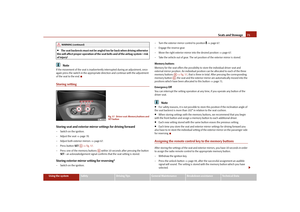 72
72 73
73 74
74 75
75 76
76 77
77 78
78 79
79 80
80 81
81 82
82 83
83 84
84 85
85 86
86 87
87 88
88 89
89 90
90 91
91 92
92 93
93 94
94 95
95 96
96 97
97 98
98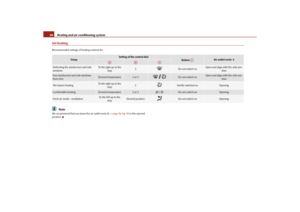 99
99 100
100 101
101 102
102 103
103 104
104 105
105 106
106 107
107 108
108 109
109 110
110 111
111 112
112 113
113 114
114 115
115 116
116 117
117 118
118 119
119 120
120 121
121 122
122 123
123 124
124 125
125 126
126 127
127 128
128 129
129 130
130 131
131 132
132 133
133 134
134 135
135 136
136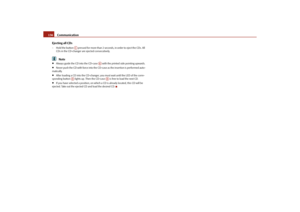 137
137 138
138 139
139 140
140 141
141 142
142 143
143 144
144 145
145 146
146 147
147 148
148 149
149 150
150 151
151 152
152 153
153 154
154 155
155 156
156 157
157 158
158 159
159 160
160 161
161 162
162 163
163 164
164 165
165 166
166 167
167 168
168 169
169 170
170 171
171 172
172 173
173 174
174 175
175 176
176 177
177 178
178 179
179 180
180 181
181 182
182 183
183 184
184 185
185 186
186 187
187 188
188 189
189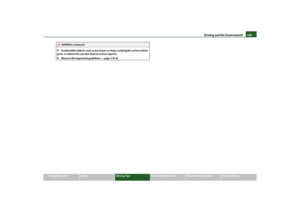 190
190 191
191 192
192 193
193 194
194 195
195 196
196 197
197 198
198 199
199 200
200 201
201 202
202 203
203 204
204 205
205 206
206 207
207 208
208 209
209 210
210 211
211 212
212 213
213 214
214 215
215 216
216 217
217 218
218 219
219 220
220 221
221 222
222 223
223 224
224 225
225 226
226 227
227 228
228 229
229 230
230 231
231 232
232 233
233 234
234 235
235 236
236 237
237 238
238 239
239 240
240 241
241 242
242 243
243 244
244 245
245 246
246 247
247 248
248 249
249 250
250 251
251 252
252 253
253 254
254 255
255 256
256 257
257 258
258 259
259 260
260 261
261 262
262 263
263 264
264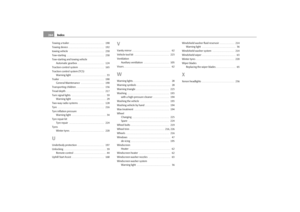 265
265 266
266 267
267 268
268 269
269 270
270






